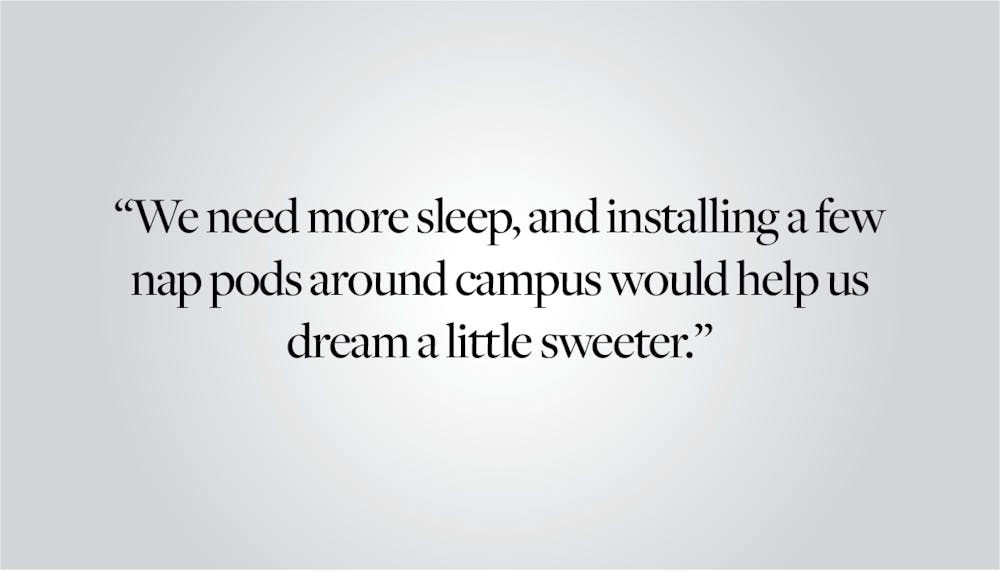Brown students’ collective experience of sleep deprivation is apparent this midterms season as heads nod forward during lectures, people slump over library desks and yawns abound. It’s all a part of the grind — the constant cycle of working until early morning, waking up barely in time for a 10 a.m. class and catching brief naps here and there before starting to study again.
Despite the well-researched consequences of sleep deprivation — including fatigue, brain fog and shortened attention span — college students continue to sleep too little. We are among the most sleep-deprived populations, with more than 70% of college students reporting that they receive less than the daily eight hours of sleep typically required by young adults and 50% reporting daytime sleepiness. Colleges like Brown should invest in nap pods to help mitigate their students’ chronic lack of sleep.
Nap pods are chair-like pieces of furniture that allow individuals to take naps in busy environments. They come in many shapes: reclining chairs with large privacy domes, capsules with sliding doors and pods shaped like futuristic, colorful jelly beans. Many have features such as sleep timers, music and lighting adjustments to optimize a user’s napping experience.
The point of nap pods is to provide users with a private, comfortable setting to recharge when they cannot sleep in a bedroom. Taking a short nap can be extremely beneficial, as research suggests even short naps can increase energy levels, boost creativity, strengthen memory and lower the risk of cardiovascular issues. Dozing in nap pods grants users all these benefits without the soreness and muscle pain that can accompany naps slouched in a chair or over a desk.
Plenty of companies and universities have already taken advantage of nap pods, including Google, Facebook, Stanford University, the University of Florida and the University of California at Berkeley. The University of California at Los Angeles has special nap pods for campus commuter students who are unable to return home during the long school day. At these colleges, nap pods are located strategically in places like libraries, study rooms and engineering schools so they are easily accessible to students. Sleep timers in the nap pods would ensure that all individuals will have an opportunity to nap without needing to wait too long.
In theory, there are other ways colleges could help their students get more sleep. The obvious option would be to reduce coursework, but this would be contentious, and students could find other avenues — clubs, research and other classes — to fill up their schedules. Sleep education campaigns could help students become more aware of the importance of a good night’s sleep, but they would not make going to sleep earlier or napping during the day any easier for students, who would still have the same busy schedules. Thus, nap pods offer universities a unique opportunity to invest in their students’ well-being in a practical and tangible way.
Currently, Brown’s BWell website has a page on the importance of sleep and a link to a sleep hygiene assessment. Both are helpful sources of information, but Brown can do more to ensure its students can actually sleep 8 hours a day and avoid pulling all-nighters, as the website suggests. Although nap pods are expensive, with many costing $8,000 to $12,000 per pod, Brown should commit resources to this investment in the health of its relatively small student body.
Adequate sleep is an essential yet frequently overlooked component of college students’ well-being. We need more sleep, and installing a few nap pods around campus would help us dream a little sweeter.
Juliet Fang ’26 can be reached at juliet_fang@brown.edu. Please send responses to this opinion to letters@browndailyherald.com and other op-eds to opinions@browndailyherald.com.
Juliet Fang is a second year at Brown studying Ecology and Evolutionary Biology. In her free time, she enjoys running, cycling, and watching duck videos.





